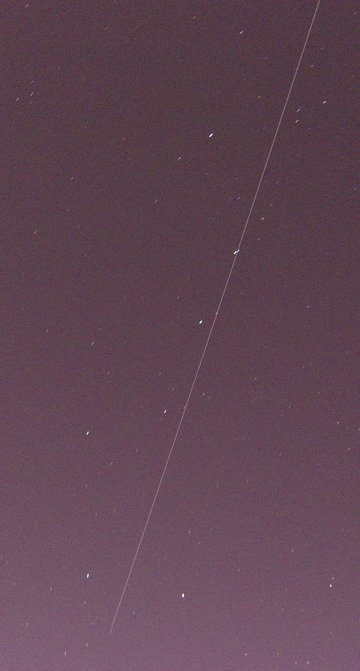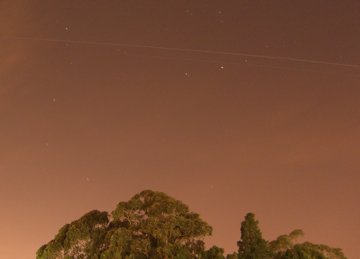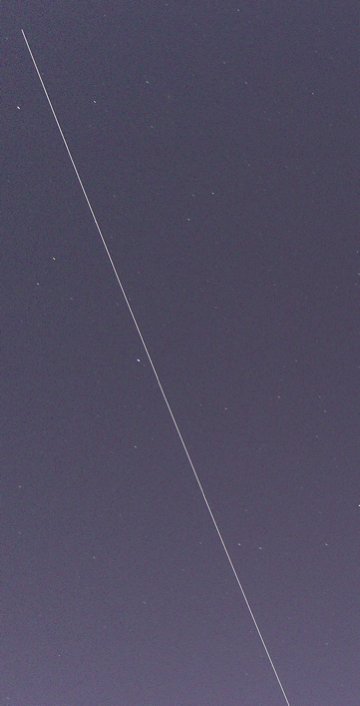I always have a little pang of loss when we turn the clocks back. The days have been getting shorter for months, of course; it’s dark in the morning; but for me, the fact we’re moving into the dark part of the year finally hits home these first few days after changing the clocks. The light at dusk is just as pretty; but the night starts that much earlier. The good news: the current daylight saving law, under which we go to standard tiime (maybe it should be called winter time) the first Sunday in November and then “spring ahead” the second Sunday in March, means that we’ve only got four months to go before we move the clocks ahead again. (Yes, I concede: if I were a morning person, I’d absolutely love setting the clocks back.)
In the meantime, here’s something to do with the early dark: Go out and look for Comet Holmes. I didn’t hear about it until yesterday, when I saw an item from a space-launch email list to which I subscribe that describes a comet that has suddenly become visible to the unaided (a.k.a. naked) eye. The Sky and Telescope site has an excellent guide on the comet and how to find it (if we were in the back yard together I could show you: “You see Cassiopeia up there, sort of in the northeast? That sort of ‘W’ shape. Good. OK — now go down and a little toward the horizon to that next group of stars; not down to the brightest star — that’s Capella in Auriga; just between the W and that bright one. Look up there by that little group of stars and you’ll see this fuzzy little Q-tip thing that you’re not really sure is there, but it is. Here — look through the binoculars. See? Isn’t that amazing?”) The comet actually has a pretty interesting story. Seen from Earth, it’s usually quite dim, even when its at its closest approach to the sun (that point, called the perihelion, is about twice as far away from the sun as we are). But for some reason, it has a history of “outbursts” — episodes during which it brightens suddenly (not unlike me when I find my lottery ticket has a matching number). Go out and see it.
And if you’re looking for another sky sighting, and you are a morning person, I note that the International Space Station/space shuttle tandem will make five-minute passes over New York City at 5:52 a.m. ET and (two orbits later) over the San Francisco Bay Area at 5:54 a.m. The New York appearance will occur shortly after the vehicles have undocked.
[Comet Holmes update: It looks even brighter tonight. Yesterday, the Boston Globe ran a nice piece on our overnight sensation.]
Technorati Tags: comet holmes





